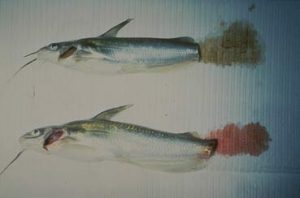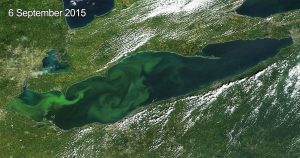Biography:
Dr. Michelle Baker is a Lafayette College alumni who graduated in 1992. She majored in biology at Lafayette and then went on to receive her Ph.D. from the University of New Mexico in 1998. She currently works at Utah State University in the department of biology. Her research interests include: aquatic ecosystem ecology, biogeochemistry, water quality, and hydrology. She states that her academic and research goals are, “to understand how water movement within the landscape influences ecosystem structure and function. I use an interdisciplinary approach, involving tools from ecology, hydrology, and geochemistry to ask questions about how hydrologic linkages within watersheds influence energy and nutrient cycling.”
Summary of Presentation:
Nutrients are required for all life, but reactive nutrients are increasing globally and causing excess nutrients in rivers, which have negative impacts not only in the affected rivers, but also in the entire ecosystem. Three specific nutrients that have negative effects on rivers and have built up in excess amounts due to human impacts are phosphorus, nitrate and ammonium. Even below toxic levels, rivers can become impaired due to excessive nutrients. Numerous sources of these excess nutrients are anthropogenic (or caused by human activity). Ecosystem disservices, or ways in which humans can negatively impact the rivers include polluting or contaminating the water, and sewage or latrines in the water. In addition, combustion and fertilizers cause excess amounts of nitrate, while mining causes excess phosphorus. Excess nutrients lead to dead zones or algae blooms that upset the balance of the ecosystem and can kill fish or cause other significant problems for humans and the ecosystem.
Brown blood disease and blue baby syndrome are two diseases caused by excess nitrates in rivers. Nitrates turn to nitrites because of certain bacterias, and excess nitrites cause the hemoglobin in blood that carries oxygen to tissues to be unable to release oxygen to the tissues properly. It can cause the blood of fish to appear dark brown and the skin and nails of children to appear blue.
Research:
- Her current research involves water sustainability with iUTAH (innovative urban transitions and arid-region hydro-sustainability). This is a state-wide interdisciplinary research and training program. It aims to strengthen science with the hopes of improving Utah’s water future.
- She is also researching dissolved organic matter dynamic in streams and rivers. Her team is exploring factors that influence dissolved organic matter dynamics in streams and rivers
- Lastly, she is researching tools for nutrient criteria in Great Salt Lake wetlands. Her team is applying traditional tools from aquatic ecosystem ecology to assist watershed managers. This helps develop scientifically defensible nutrient criteria for the wetlands.
What can you do to limit the amount of nutrient impact you have on rivers?
It is important to realize the sources of excess nutrients are not limited to the area around a river or the watershed. Take your waste with you, clean up after your pets, and avoid using fertilizers in your lawn. Residential use of fertilizers has had a significant impact on river nutrients over the past few decades. Also ensure your sewer line is clean and working properly.
Learn more about the nutrient problem below!
A sampling of news stories about the nutrient problem:
Brown Blood Disease
Water crisis in Toledo, OH on Lake Erie
Slimy Green Beaches in South Florida
Gulf of Mexico Dead Zone
The River Continuum Concept, developed in southeast PA at the Stroud Water Research Center
Managing the Nitrogen Cycle – an NAE Grand Challenge
Recent Related Publications
Reisinger AJ, Tank JL, Rosi-Marshall EJ, Hall RO, Baker MA. 2015. The varying role of water column nutrient uptake along river continua in contrasting landscapes. Biogeochemistry 125(1):115-31.
Hall Jr RO, Tank JL, Baker MA, Rosi-Marshall EJ, Hotchkiss ER. 2016. Metabolism, gas exchange, and carbon spiraling in rivers. Ecosystems 19(1):73-86.
Hall SJ, Hale RL, Baker MA, Bowling DR, Ehleringer JR. 2015. Riparian plant isotopes reflect anthropogenic nitrogen perturbations: Robust patterns across land use gradients. Ecosphere 6(10):1-16.
Brown blood disease image source: http://www.aquaculturepro.com/aquaculture-articles/water- quality/brown-blood-disease
Algae bloom image source: http://lakeeriealgae.com/


